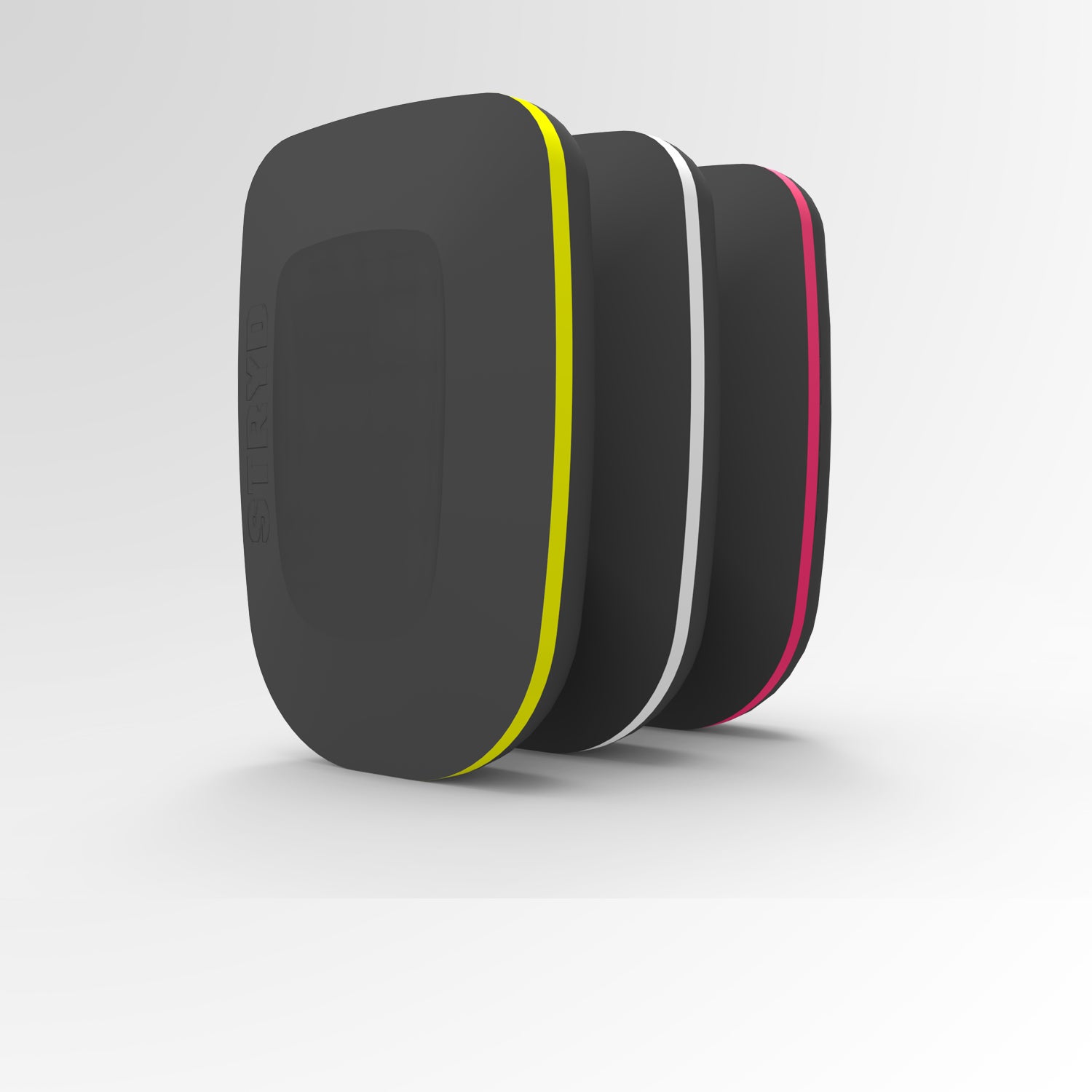A few weeks ago, Stryd, a Boulder, Colorado-based start up, closed out a Kickstarter campaign to fund the first-ever power meter designed for runners. (Total amount pledged: $253,065.) Competitive cyclists have sworn by power meters for years, arguing that they offer a much more objective source of data than speed and heart-rate monitors, the two most common training devices. Both speed and heart rate can vary enormously from one workout to the next—speed is affected by wind, terrain, and altitude, and heart rate by everything from sleep to caffeine intake. But power, which measures how fast and with how much force a rider turns a pedal, doesn’t depend on anything but the rider. Three hundred watts is three hundred watts whether you’re going downhill at 40 miles per hour or uphill into a head wind.
Stryd’s device is a simple, algorithm-powered motion sensor that clips to the waistband of your shorts. The device collects data about a your forward and vertical motion, then feeds that into a smartphone or GPS-enabled watch. Until now, gathering power data on runners has required multi-thousand-dollar treadmills outfitted with force-plate sensors. Force plate sensors and strain-gauge meters used by cyclists directly measure power output. Stryd, like the iBike power meter, estimates power. But the company argues that the data is accurate enough and can help runners with everything from pacing to optimizing form.
I’m mildly skeptical: Other than a watch, I’ve never had much success with fitness tech. But I still think I train smart, mainly because I’ve had to develop a pretty good sense of effort and pace.
Theoretically, there’s probably some truth to that, especially for anyone who frequently runs in bad weather or on trails. Instead of estimating how much the wind slowed down your track workout, for example, or guessing about proper pace for a hill workout, you’d just pick a wattage range and go. And if you’re interested in making your form more efficient, it’d be easy to see whether tweaking your stride makes you more powerful at a given heart rate.
Does Stryd work? The first version of the devices are scheduled to ship in July, a reviews from early testers have been mostly positive. Fitness-tech blogger DC Rainmaker was impressed, as was Competitor’s Brian Metzler, although Metzler noted that when Stryd's development team compared their device against two lab tests for power, Stryd had a 10 percent margin of error. The developers told Metzler they're currently working to improve that margin. While a direct measure of power would certainy solve that issue, we know of no plans—from any company—to release direct power tech for runners in the near future.
Perhaps a better question is whether you actually want a power meter to help with pacing. I’m mildly skeptical: Other than a watch, I’ve never had much success with fitness tech. I forget to charge GPS devices, hate running with my phone, can't be bothered with heart-rate monitor straps, and don't even keep a training log. But I still think I train smart, mainly because I’ve had to develop a pretty good (I think) sense of effort and pace. I’m curious whether a power meter might subvert that sense. Would it distract me from listening to my body?
On the other hand, that’s pretty much the same worry that math teachers used to raise about calculators—do they make students better at math, or worse?—and there’s no way I could function without a calculator. And in fairness, it’s also an argument that's mostly been settled in cycling, where serious riders swear by power meters. So I may suspend my skepticism long enough to give Stryd a try, especially now that I live in a hilly, high-altitude city without regular access to a track. In the year that I’ve been here, I’ve struggled to find the right effort on hard runs, often going into oxygen debt on uphill stretches and coasting on downhills, and I think my training has suffered as a result. Maybe Stryd can help.


